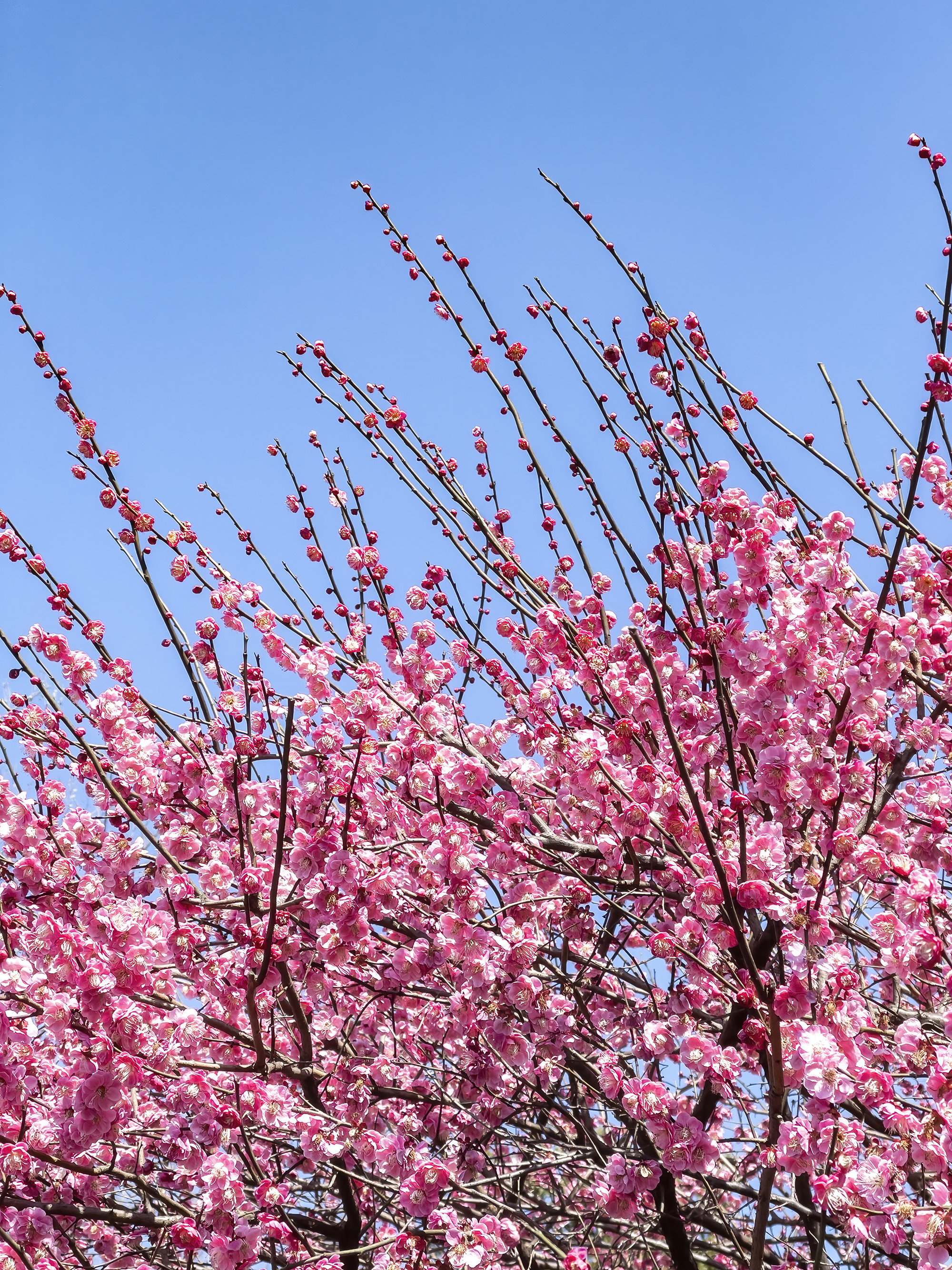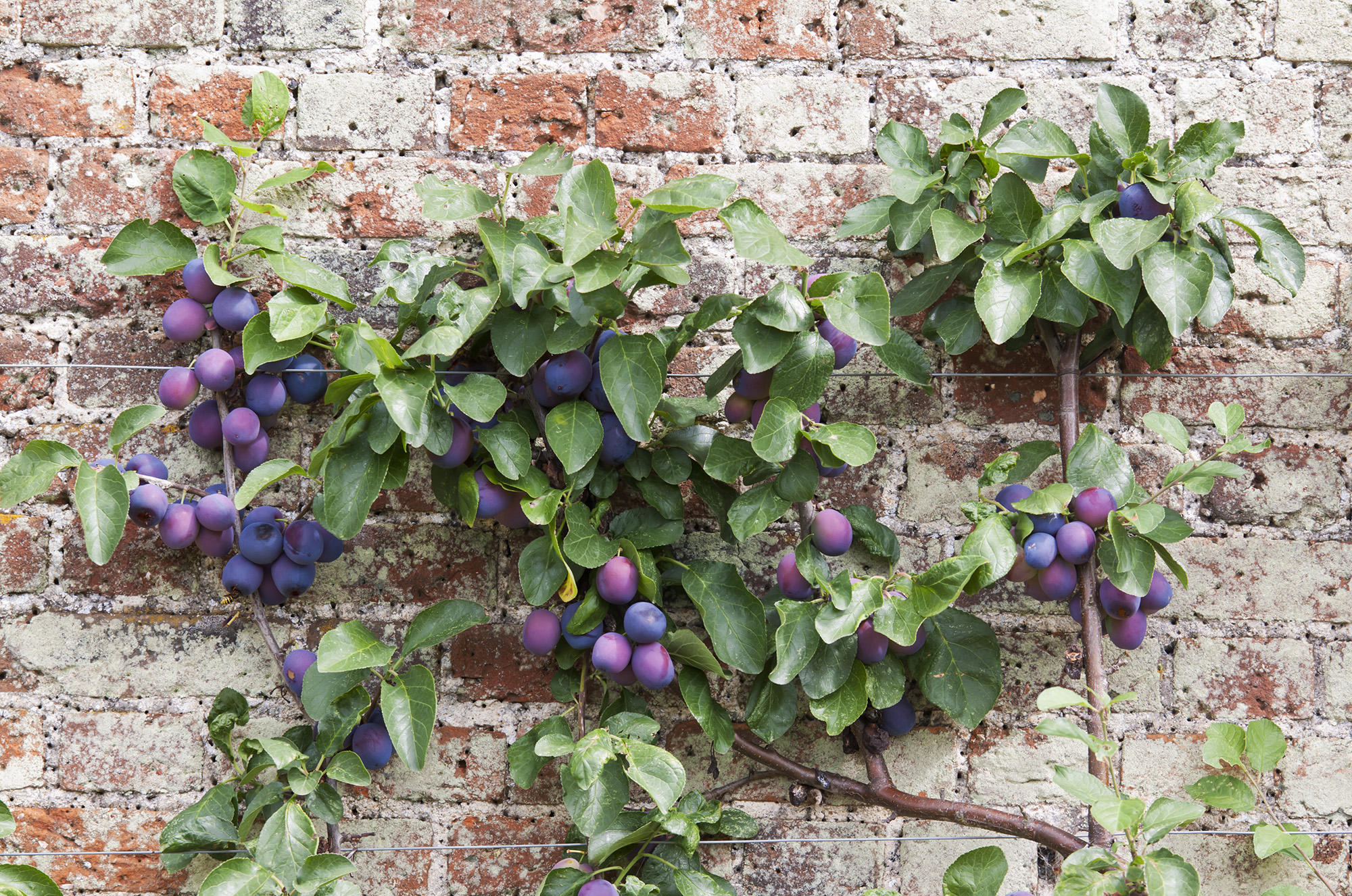How to plant plum trees
Discover how to plant plum trees to ensure a bountiful crop of the most versatile fruit


Learning how to plant plum trees correctly is so important if you want a healthy tree that yields the most delicious fruit.
With their sweet, juicy flesh, plums are as delectable eaten ripe as when cooked into desserts and jams. This versatility makes them one of the most delightful backyard ideas – especially for beginner growers.
‘Plums are easy to grow and are compact, prolific producers,’ says garden expert Leigh Clapp. One of the best fruit trees, it's one to ensure you include when planning a kitchen garden.
It’s important to invest in high-quality trees from a reputable nursery – and bear in mind that just one tree may not be enough, depending on the variety you choose.
‘Plum trees are low-maintenance, beautiful and delicious, but most are not self-pollinating, which means you may want to plant at least two trees,’ says Pete Smith, arborist and urban forestry program manager at Arbor Day Foundation.

How to plant plum trees – step by step
The good news is that if you already know how to plant fruit trees of other varieties, then it’s not so different to learn how to plant plum trees.
- First, remove the plum tree from the container and loosen the outer layer of the soil on the roots. ‘Measure the root wad and then dig a hole that is the same height and at least twice as wide,’ says Lisa Tadewaldt, owner of Urban Forest Pro. ‘This allows for your new tree's roots to become established more easily as they don't need to fight through the existing – and compacted – soil as much.’
- Before planting your plum tree, you can mix compost into the planting hole, but keep it light and dig it into the surrounding soil. Otherwise, the roots will stay in the planting hole rather than spreading out. ‘This can cause the tree to become unstable later in life,’ says Tadewaldt.
- Insert a stake to protect your plum tree as it grows. This needs to come up to around a third of the tree’s height, and can be attached to your tree using a flexible tree tie. ‘Fruit tree roots need a firm grip on the soil, but strong winds wobble them and that means roots can’t suck up the food and water they need to fruit well,’ says Clive Harris, founder of DIY Garden.
- Backfill the soil into the hole and firm it down to avoid any air pockets.
- Plum trees are thirsty plants, so water them well to bed in.
How to plant a plum seed
You can grow a plum tree from the pit you might usually discard. Here's how:
- Nibble, scrub and wash all the pulp from the cherry seed.
- Wrap the clean cherry seed in a piece of damp paper towel and seal it inside a plastic food bag, then leave it in the fridge for between four to eight weeks.
- After four weeks, check if it's sprouting – if not, give it another week, and check again (and so on).
- Once it's sprouted, plant it 2in deep in a well-drained pot filled with damp compost; keep it watered on a sunny windowsill.
- After the last frosts, plant it outside in a hole twice the size of the pot.
- Fertilize in spring and late summer.
When to plant plum trees
Potted plum trees can be planted for most of the year, but bare-root fruit trees are only available from fall to spring, and this is the best time to plant all plum trees.
Planting bare-root trees is more cost-effective than buying potted trees, and the plants often grow to be stronger and better quality.
Choose a dry day to plant your plum tree – ‘you should wait until the soil is damp but not frozen,’ says Harris.
Where to plant plum trees
‘Plum trees need a warm, frost-free place with well-drained, but moisture-retentive, fertile soil,’ says Clapp.
It's also important to protect them from harsh weather. ‘They do well in areas sheltered from wind exposure,’ adds Smith.
The trees like a sunny spot, and need direct sunlight for at least six hours a day. You can train a plum tree against a sunny wall or fence in either a fan shape or as a cordon on one of the many vegetable garden trellis ideas.
Test your soil type to see if it is compatible with growing plums. While plum trees are tolerant of most soils, they ideally prefer a neutral to slightly acidic soil that retains some moisture.

How to care for plum trees
‘Regular waterings, sunlight exposure and protection from harmful pests are essential to the survival of plum trees,’ says Smith.
Potential pests to be on the lookout for include plum moth and spotted wing drosophila – remove any affected or diseased fruit as soon as you spot it.
Plums like the soil to be moist, so water the trees daily for the first month to help them become established.
‘Feed, top dress and mulch plum trees in spring, and prune lightly at the end of July, only if needed,' adds Clapp.
‘Thin out young fruit to avoid over-laden branches. Pick plums with the stalk attached before they are fully ripe and they will store for a few weeks.’
Best plum trees to plant
‘Plum varieties are split into cooking and eating types; the cookers are better for jams and jellies,’ says Holly Farrell, author of The Jam Maker’s Garden. ‘They are further divided into those varieties with stones that will part easily from the flesh and those that do not (stick-stones).’
‘Marjorie's Seedling is the best late plum for eating and cooking, and is self-fertile,’ says Clapp. ‘But there are different varieties that will fruit from July to September.’
Victoria is another hugely popular plum tree – ‘it’s the easiest to grow, suitable for dessert and cooking, and self-fertile.'
Other recommended varieties include Stanley, Czar, Opal and Avalon.
As well as selecting a variety, an important aspect of learning how to plant plum trees is knowing which rootstock is best, as it dictates the tree’s mature size and growth habit.
Pixy is a popular dwarf option for smaller gardens and containers. St Julien ‘A’ is more vigorous, growing up to 15 feet, and offers a heavy crop as well as good compatibility with other varieties. Choose this type if you have room for it.
Do I need 2 plum trees to produce fruit?
You may need two plum trees to produce fruit as many trees are not fully self-fertile. Though many varieties will produce some fruit when planted on their own, you won’t get a large crop.
It’s vital to choose partner trees that are compatible, which includes other plum varieties as well as many gages and damsons.
If you have a small garden and only space for one tree, then choose a reliable self-fertile plum tree, such as Marjorie’s Seedling.
How long does it take for a plum tree to bear fruit?
The length of time it takes for a plum tree to bear fruit largely depends on the variety, rootstock and how old the tree was when it was planted.
In general, you can expect to get some fruit within three years. ‘The tree will reach full cropping capacity after five years,’ says Clapp.
Sign up to the Homes & Gardens newsletter
Design expertise in your inbox – from inspiring decorating ideas and beautiful celebrity homes to practical gardening advice and shopping round-ups.

Melanie has worked in homes and gardens media for two decades. Having previously served as Editor on Period Living magazine, and worked on Homes & Gardens, Gardening Etc, Real Homes, and Homebuilding & Renovating, she is now focusing on her passion for gardening as a Senior Editor at Gardening Know How. As a keen home grower, Melanie has experimented with pretty much every type of vegetable at some point – with mixed results. Often it is the simplest things that elude you, which may explain why she just can't seem to master zucchinis.
-
 I’m an HVAC technician, and this is when I turn my AC on each year – plus 5 checks I always do beforehand
I’m an HVAC technician, and this is when I turn my AC on each year – plus 5 checks I always do beforehandSave yourself an AC hassle by running my checks and turning it on before big heat hits
By Josh Mitchell Published
-
 This simple marble hack elevates my budget-friendly wooden kitchen countertops and prevents the dreaded water damage for way less than you’d think
This simple marble hack elevates my budget-friendly wooden kitchen countertops and prevents the dreaded water damage for way less than you’d thinkThis design trick looks expensive, solves a problem, and was the easiest decision I made during my kitchen reno
By Charlotte Olby Published